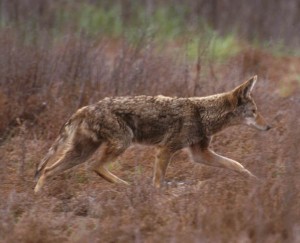
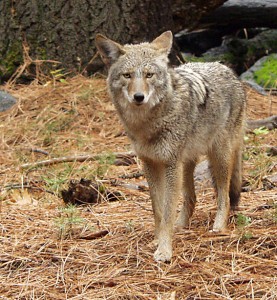
Tag: Pagan Blog Project
The Origins of Candlemas
February 1, 2013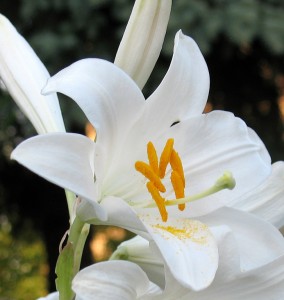
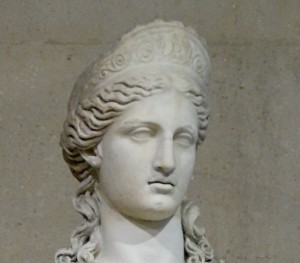
Baba Yaga and the Pelican
January 25, 2013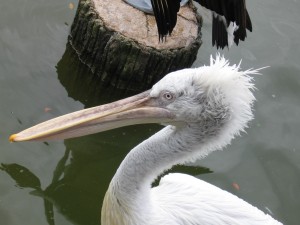
Michael Shapiro (1983) finds that Baba Yaga is derived from two prehistoric theriomorphic prototypes – the snake and the pelican. The Slavic word baba, like other Slavic kinship terms, has been applied to species of plants and animals. Baba has come to be the indigenous term for the pelican in some Russian, Ukrainian, Bulgarian, and Upper Sorbian dialects…
The pelican depends mostly on fresh fish kills for her diet, but she is also a scavenger who has undoubtedly dogged humans since we began fishing. An animal which develops a symbiotic relationship with humans often becomes a divinity. Baba Yaga is depicted today as an old woman, and she parallels the grandmother owl and raven goddesses of northern Europe, who are scavengers or predators like the pelican. Baba Yaga is usually described as having a very long nose, and sometimes a pronounced chin as well, which also evokes the pelican. The pouch of the pelican can be compared to the skin hanging from the jowls of an old woman, and the large body of the pelican is like the sturdy stout figure many women develop as they age.Marija Gimbutas has documented in detail the fondness of Neolithic European cultures for water bird goddesses. While in most cases it is impossible to know what type of water bird is being depicted, it would make sense for the pelican to be represented. Outside of warm climates the pelican is a migratory bird, it typically lives in flocks, and (at least in Europe) it is mostly white. I won’t go into the reasons for this now, but migration, communal living, and the colors black, white or red usually have special religious or magical significance. The Dalmatian Pelican is usually silent in adulthood except when breeding, a detail I find fascinating because Baba Yaga is known for her long silences. Johns sees the erratic head feathers that distinguish this species as related to the messy hair attributed to Baba Yaga. Another interesting detail is that Baba Yaga never walks anywhere except in her house or yard. She flies in a mortar, using the pestle to steer, and she either uses a broom to sweep away her sky tracks, or she ditches the mortar and pestle and uses the broom to fly instead. Baba Yaga’s penchant for flying has led many to surmise that she must have once been a bird goddess.One problem with associating Baba Yaga with the aggressive pelican is that she is a rather ambiguous figure in Russian literature. Usually she is a dangerous witch, ugly in every sense of the word, but sometimes she is a wise old woman who helps the protagonist – and sometimes she is both. This contradiction becomes even more pronounced when we move into the Balkan region. Radomir Ristic says
The Balkan Baba is quite different from Russian Baba Yaga because she is much less negative and evil, and quite possibly [the] only way that the two are related is the fact that both of them are old women. However, if we know that people and Witches have different opinions of Forest Mother, we can assume that their opinions of Baba also differ. She is still the “ancestor” who helps her generations, and if she picks someone to be her pupil, they are not in danger because that person has passed all manner of tests that they are not even aware of. She only punishes selfish and evil people who want magical knowledge solely for selfish goals or material profit.
Johns does not see the pelican as a negative association for Baba Yaga. “If we associate the snake with Yaga’s wicked aspect, the pelican can be associated with her good aspect (which in turn connects her with the bird and Great Goddesses). As the benevolent Baba Yaga is forced into the background, now appearing only as a relic, the pelican disappears.” The pelican has a mythical association with sacrifice and selfless motherhood, an association predating Christianity which nevertheless became a popular allegory of Christ’s martyrdom. The story goes that a mother pelican unable to provide for her chicks during a famine pierced her own chest so the chicks could drink her blood. This may be linking the blood of the womb with the pelican as mother goddess. At any rate pelican mothers and fathers do work tirelessly to feed their insatiable brood, and they defend their young forcefully against predators.I see the pelican as embodying both the benevolent and the cruel sides of Baba Yaga. This bird arouses conflicting feelings and cannot be easily categorized. The pelican holds the key to many of life’s more complex mysteries. 
Las Brujas
January 18, 2013 Most people who meet my casual acquaintance struggle with where to place me. Many file me with “must be Native American.” A few ask point blank if my parents were hippies. When I lived in southern Arizona, I was surprised (and a bit disturbed, because I wasn’t used to it) to discover that many Mexicans and Mexican-Americans had me pegged right away. Some (actually the majority) carefully avoided me. Others cajoled me into telling their fortunes or even asked for charms. My landlady had trouble getting repairs done because the Mexican construction workers she employed refused to enter my house. A friend of mine, also a brujo, had an even more disconcerting experience: some Spanish-speaking landscapers he hired reported him to the sheriff.In Brujas, Bultos, y Brasas: Tales of Witchcraft and the Supernatural in the Pecos Valley Nasario Garcia interviews los viejitos, the old folks, in rural New Mexico about the witches. The book reminds me of ghost story compilations from the Ozarks or Appalachia. Witches and supernatural occurrences are portrayed in wholly malevolent ways. The line between witches and healers is firmly drawn, something which contradicts my own observations in southern Arizona and in another part of New Mexico. The familiar story of folk healers defaming rival healers with accusations of witchcraft sounds like it might be part of the subtext in these reminiscences, although this is reading between the lines. Another possible parallel with other folklore of European derivation is the description of ghosts or witches as points of light – brasas or embers. In some cultures the fairies are described as sparks of light.The viejitos often talk about El Mal Ojo, the evil eye. According to Viviana Tapia, “You treated it by spitting wild pie plant with cachana, a root used to ward off evil. You had to spit it – spit in the face of the afflicted so that the evil eye could be lifted, so that it would go away. It’s cachana, that’s what the medicine is called. The same persons who would spit it are the ones who would chew it (the root). And it had to be a Juan or a Juana in order to cure the victim, got it? Any other way was not possible.”Another common theme in the interviews is La Llorona, The Wailing Woman, for those who like to collect these stories. I won’t go into this legend here today, but if there’s some interest I’ll do a post on it later.Most of the people interviewed do not appear to know anything special about witchcraft (although you never know), but there is one woman I would like to have talked to. The interviews happened about twenty years ago, so it is unlikely that any of the storytellers are still alive. I appreciated having both the Spanish and the translation. Academic researchers have a hard time understanding magical concepts, and what they interpret is highly suspect. Although my Spanish is not the best, I think the translation is dependable.I wonder if some day a folklorist in the Sonoran Desert will be collecting stories about La Bruja Gringa. I did NOT put El Ojo on anybody, just so you know. I will haunt you with a thousand brasas if you say I did.
Most people who meet my casual acquaintance struggle with where to place me. Many file me with “must be Native American.” A few ask point blank if my parents were hippies. When I lived in southern Arizona, I was surprised (and a bit disturbed, because I wasn’t used to it) to discover that many Mexicans and Mexican-Americans had me pegged right away. Some (actually the majority) carefully avoided me. Others cajoled me into telling their fortunes or even asked for charms. My landlady had trouble getting repairs done because the Mexican construction workers she employed refused to enter my house. A friend of mine, also a brujo, had an even more disconcerting experience: some Spanish-speaking landscapers he hired reported him to the sheriff.In Brujas, Bultos, y Brasas: Tales of Witchcraft and the Supernatural in the Pecos Valley Nasario Garcia interviews los viejitos, the old folks, in rural New Mexico about the witches. The book reminds me of ghost story compilations from the Ozarks or Appalachia. Witches and supernatural occurrences are portrayed in wholly malevolent ways. The line between witches and healers is firmly drawn, something which contradicts my own observations in southern Arizona and in another part of New Mexico. The familiar story of folk healers defaming rival healers with accusations of witchcraft sounds like it might be part of the subtext in these reminiscences, although this is reading between the lines. Another possible parallel with other folklore of European derivation is the description of ghosts or witches as points of light – brasas or embers. In some cultures the fairies are described as sparks of light.The viejitos often talk about El Mal Ojo, the evil eye. According to Viviana Tapia, “You treated it by spitting wild pie plant with cachana, a root used to ward off evil. You had to spit it – spit in the face of the afflicted so that the evil eye could be lifted, so that it would go away. It’s cachana, that’s what the medicine is called. The same persons who would spit it are the ones who would chew it (the root). And it had to be a Juan or a Juana in order to cure the victim, got it? Any other way was not possible.”Another common theme in the interviews is La Llorona, The Wailing Woman, for those who like to collect these stories. I won’t go into this legend here today, but if there’s some interest I’ll do a post on it later.Most of the people interviewed do not appear to know anything special about witchcraft (although you never know), but there is one woman I would like to have talked to. The interviews happened about twenty years ago, so it is unlikely that any of the storytellers are still alive. I appreciated having both the Spanish and the translation. Academic researchers have a hard time understanding magical concepts, and what they interpret is highly suspect. Although my Spanish is not the best, I think the translation is dependable.I wonder if some day a folklorist in the Sonoran Desert will be collecting stories about La Bruja Gringa. I did NOT put El Ojo on anybody, just so you know. I will haunt you with a thousand brasas if you say I did.
The Alder Tree
January 11, 2013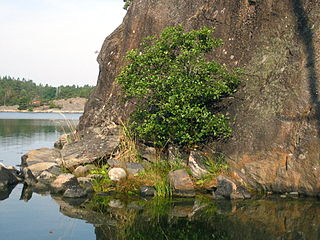
A Look Ahead
January 4, 2013
The Y-Junction
December 14, 2012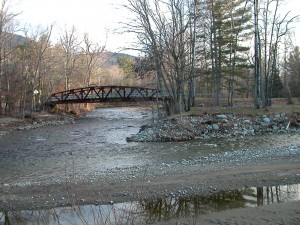 The goddess Hecate is often referred to as “Goddess of the Three-Formed Crossroads,” a title which strengthens my belief that she was originally a goddess of the waterways. By “three-formed” the title refers to a junction of three roads meeting in a “Y.” In Greece a statue of the goddess was sometimes placed at such a crossroad, her three faces pointing in three directions. Offerings of food would be placed there, particularly by those embarking on a journey.
The goddess Hecate is often referred to as “Goddess of the Three-Formed Crossroads,” a title which strengthens my belief that she was originally a goddess of the waterways. By “three-formed” the title refers to a junction of three roads meeting in a “Y.” In Greece a statue of the goddess was sometimes placed at such a crossroad, her three faces pointing in three directions. Offerings of food would be placed there, particularly by those embarking on a journey.


A Yule Gift I Knew You Wouldn’t Have
December 7, 2012This Winter Solstice I thought I’d get you something more original than a partridge in a pear tree. This is a bird-of-paradise (Manucodia comrii) from New Guinea, singing a song you’ve probably only heard on a space music soundtrack. The clip is from Cornell University’s ornithology website.
The Yule Fire
November 30, 2012 In early December, the equivalent in Pagan households to “Where did we store the Christmas lights?” is “What did we do with the Yule log?” A piece of wood from last year’s Winter Solstice ritual fire is always saved to burn on the next year’s fire. This is a throwback to times when a perpetual fire was burned at the community shrine or temple, and it symbolizes the continuity of tradition.It is the fire and not the log that is the central theme of the Yule ceremony. The hearth fire is the manifestation of the ancestral spirits and the generating force of new human life. According to Clement A. Miles in Christmas Customs and Traditions: “Ancestral spirits, it seems, were once believed to be immanent in the fire that burned on the hearth, and had to be propitiated with libations, while elsewhere the souls of the dead were thought to return to their old homes at the New Year, and meat and drink had to be set out for them.” This sounds a lot like the holy day of Samhain that just passed on October 31st. Euro-Pagan religions which preceded Christianity are essentially systems of ancestor worship, so we would expect the ancestors to play a role in holy days throughout the year. Also keep in mind that Celtic and Germanic cultures absorbed much of the religion already practiced in the regions they settled, and thus there is duplication.In Neolithic European cultures, the hearth was the center of worship, so much so that many objects found in the vicinity of the hearth during excavations are assumed to have religious importance. Greek and Roman writings also identify the hearth as the focus of the family’s spiritual life, and indeed the Latin word for “hearth” is “focus.” Olivia Robertson, co-founder of The Fellowship of Isis, has written “The religion of the Goddess centres around the Hearth. Whether this be the inner sun flaming within the matrix of our earth, or the sun itself, this is the source of manifested life.”Although I frequently reference my symbol encylopedia, interestingly enough I had never until today looked up the entry for “hearth.” The description is short, so I will quote it in full:
In early December, the equivalent in Pagan households to “Where did we store the Christmas lights?” is “What did we do with the Yule log?” A piece of wood from last year’s Winter Solstice ritual fire is always saved to burn on the next year’s fire. This is a throwback to times when a perpetual fire was burned at the community shrine or temple, and it symbolizes the continuity of tradition.It is the fire and not the log that is the central theme of the Yule ceremony. The hearth fire is the manifestation of the ancestral spirits and the generating force of new human life. According to Clement A. Miles in Christmas Customs and Traditions: “Ancestral spirits, it seems, were once believed to be immanent in the fire that burned on the hearth, and had to be propitiated with libations, while elsewhere the souls of the dead were thought to return to their old homes at the New Year, and meat and drink had to be set out for them.” This sounds a lot like the holy day of Samhain that just passed on October 31st. Euro-Pagan religions which preceded Christianity are essentially systems of ancestor worship, so we would expect the ancestors to play a role in holy days throughout the year. Also keep in mind that Celtic and Germanic cultures absorbed much of the religion already practiced in the regions they settled, and thus there is duplication.In Neolithic European cultures, the hearth was the center of worship, so much so that many objects found in the vicinity of the hearth during excavations are assumed to have religious importance. Greek and Roman writings also identify the hearth as the focus of the family’s spiritual life, and indeed the Latin word for “hearth” is “focus.” Olivia Robertson, co-founder of The Fellowship of Isis, has written “The religion of the Goddess centres around the Hearth. Whether this be the inner sun flaming within the matrix of our earth, or the sun itself, this is the source of manifested life.”Although I frequently reference my symbol encylopedia, interestingly enough I had never until today looked up the entry for “hearth.” The description is short, so I will quote it in full:
An omphalos; the interior spiritual centre; the transference of the spirit by fire. The centre of the home; feminine domination; fire in its feminine-earth aspect, but the fire can also take on the masculine aspect with the earth as the feminine; warmth; provision of food. The Vedic round hearth is the earth, the realm of man, while the fire to the East is the realm of the gods. Among South American Indians the hearth-stone is named the ‘bear’, signifying subterranean powers and the point of communication with them. In Celtic countries the cult of the dead centred on the hearth.
I especially like the part about feminine domination.

Consecrating the Ritual Broom
November 23, 2012 To finish up the broom series, I will share some tidbits about consecrating the magical broom (also called a besom). There is no consensus about how this should be done, but many witches believe consecration is important. Carrie Moonstone says in her Witchvox article How to Make a Besom, “Once you have finished the besom, it needs to blessed and consecrated as you would with any other magickal tool. You may dedicate it to a spirit or deity of your choice and charge it with protective energies.” As Moonstone implies, the broom is not unique in this; most magical tools are consecrated in some way.In Wheel of the Year: Living the Magical Life, Pauline Campanelli says you must first “name your broom as you would a horse.” She tells you to “anoint it with oil as you would a candle, and consecrate it in the names of the Gods:
To finish up the broom series, I will share some tidbits about consecrating the magical broom (also called a besom). There is no consensus about how this should be done, but many witches believe consecration is important. Carrie Moonstone says in her Witchvox article How to Make a Besom, “Once you have finished the besom, it needs to blessed and consecrated as you would with any other magickal tool. You may dedicate it to a spirit or deity of your choice and charge it with protective energies.” As Moonstone implies, the broom is not unique in this; most magical tools are consecrated in some way.In Wheel of the Year: Living the Magical Life, Pauline Campanelli says you must first “name your broom as you would a horse.” She tells you to “anoint it with oil as you would a candle, and consecrate it in the names of the Gods:
Besom of Birch with Willow tiedBe my companion and my guide.On ashen shaft by moonlight paleMy spirit rides the windy galeTo realms beyond both space and timeTo magical lands my soul will sailIn the company of the Crone all rideThis Besom of birch with willow tiedSo do I consecrate this magical TreeAs I will, so must it be!
Tess Whitehurst gives a detailed ritual for full moon consecration of a new broom (which is too long to quote here) in her book Magical Housekeeping: Simple Charms and Practical Tips for Creating a Harmonious Home. She uses frankincense, candle flame, salt and rosewater to consecrate the broom to all four elements. Christine Zimmerman gives a four-elements consecration here. Yvonne at Earth Witchery does not believe there is anything unique about the broom in this regard and advises to “Consecrate the finished broom as you would any ritual object.”Radomir Ristic in Balkan Traditional Witchcraft maintains that “The broom itself has magical power and it does not require consecration.” I myself lean toward this point of view.SourcesCampanelli, Pauline. The Wheel of the Year: Living the Magical Life. St. Paul, MN: Llewellyn, 1989.Moonstone, Carrie. “How to Make a Besom.” At Witchvox.Ristic, Radomir. Balkan Traditional Witchcraft. Michael C. Carter, Jr., trans. Los Angeles: Pendraig, 2009.Whitehurst, Tess. Magical housekeeping: Simple Charms and Practical Tips for Creating A Harmonious Home. St. Paul, MN: Llewellyn, 2010.Zimmerman, Christine. A Pray or Ritual for a Broom Cleansing.In honor of the last article in the witch broom series, apropos of nothing, I leave you with my favorite magic broom video.
